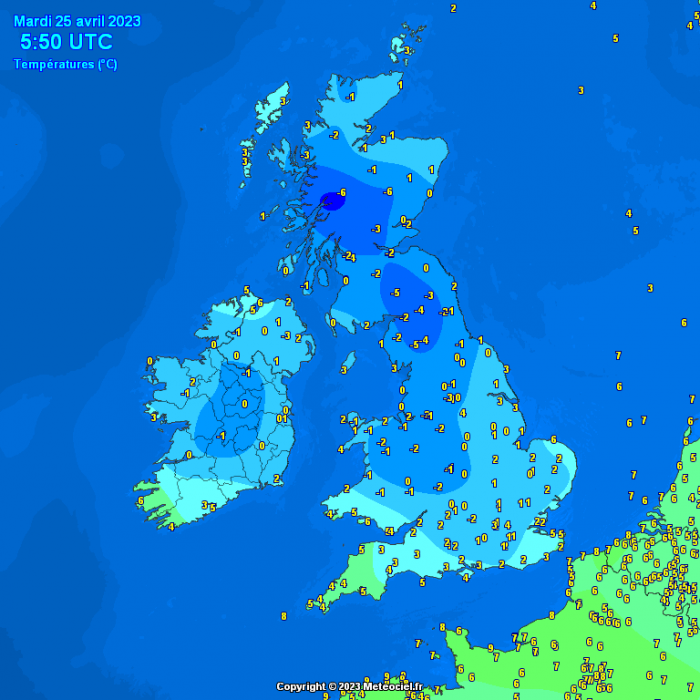
With a cold flow from the arctic spreading south across all parts yesterday, bringing snow showers to northern Scotland, settling above 200m, frost has returned overnight. A widespread frost this morning, temperatures fell as low as -6C at Tulloch Bridge in the Highlands, -2C at Benson in Oxfordshire. The frost threat retreating north over the next few days, with widespread frost generally confined to Scotland and the north of England tonight - though some frost hollows further south may still see a frost. In this blog, I look back at years where winter has bitten back with a vengeance in the second half of spring.

Sharp frosts in late April or May have been the bane of fruit growers since time immemorial. The frost can damage the delicate blossoms, which eventually form fruits after they have been pollinated. Equally, hill farmers dread heavy April snow, which can bring a toll on newborn lambs. For most of us, the out-of-season return of snow and ice is just a nuisance generally.
Snow is a lot more likely in early than late April, but perhaps the most notable late April snow event occurred in 1981. The first half of the month was the warmest for 20 years, 22C was recorded between the 9th-11th in southern England and the Midlands. But from around the 20th cold northerly winds brought cold northerly winds direct from the Arctic for the rest of the month. Much of the British Isles saw snow sweep south on April 24-25. Over 30cm of snow was recorded over the high ground of the Pennines, with 29cm in Sheffield and 26cm in Buxton. The following day 25cm of snow was recorded at Okehampton, Devon, with 20cm at Blaisdon, Gloucestershire and 14cm at Corsham, Wiltshire. The heavy snowfall with blizzard conditions led to disruption to power supplies and travel.
Between the 18-20th April 1995- northerly winds brought widespread snow showers and sharp showers.
After a warm start, with 21.5C in London on the 2nd, April 2001 turned out quite cold, with cold northerly, northeasterly or northwesterly winds prevailing from the 14th through to the 21st and not much warmer thereafter. Between 18th – 20th wintry showers brought hail, sleet and snow, north Wales and North Sea coasts particularly affected. There were widespread frosts with the temperatures falling to -4.4C Sennybridge in Powys, Wales, on the morning of the 19th and Loch Glascarnoch fell to -5.7C on the 20th.
April 1989 was a particularly cold and wintry month. Wintry weather spread south across many areas from the 4th, with sleet and snow falling in many areas, mostly settling over higher ground but with temporary accumulation even in SE England on the 5th. There were also late April snow showers extending south across many areas between the 22nd and 25th, Nottingham saw 10cm of level-lying snow on the 25th.
And if you think it’s safe to pack away your winter coats by May – think again; there has even been some snow in May. Though a rarer event than in April.
In 1979, it snowed every day somewhere in the UK between May 1 and 6, including parts of the south and southeast. Nearly a foot of snow fell on Dartmoor and parts of Wales. On the 14th, it reached 28C in London.
On May 6, 1997, over 200 stations across the UK recorded falling snow.
But before I finish, it has even snowed in June away from the Scottish mountains. Though this hasn’t happened for decades. On 2 June 1975, an inch of snow covered the cricket pitch at Buxton in a match between Derbyshire and Lancashire, and snow stopped play at several other county cricket matches. Snow even briefly fell on the Lord’s cricket ground in London.
Cold arctic winds swept across the UK that day, with -3.3C (26F) recorded at Gleneagles, in Perthshire. The unusual wintry start to June in 1975 following on from a very chilly May. If this was not astonishing enough, after the unusually cold first few days of June 1975, there followed a heatwave from the 6th, as winds turned southerly.
Loading recent activity...